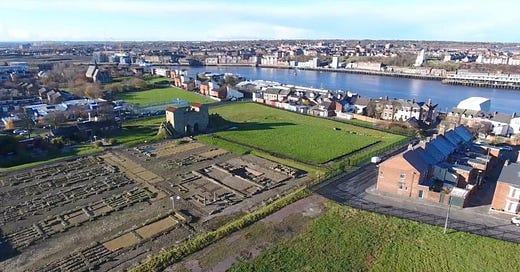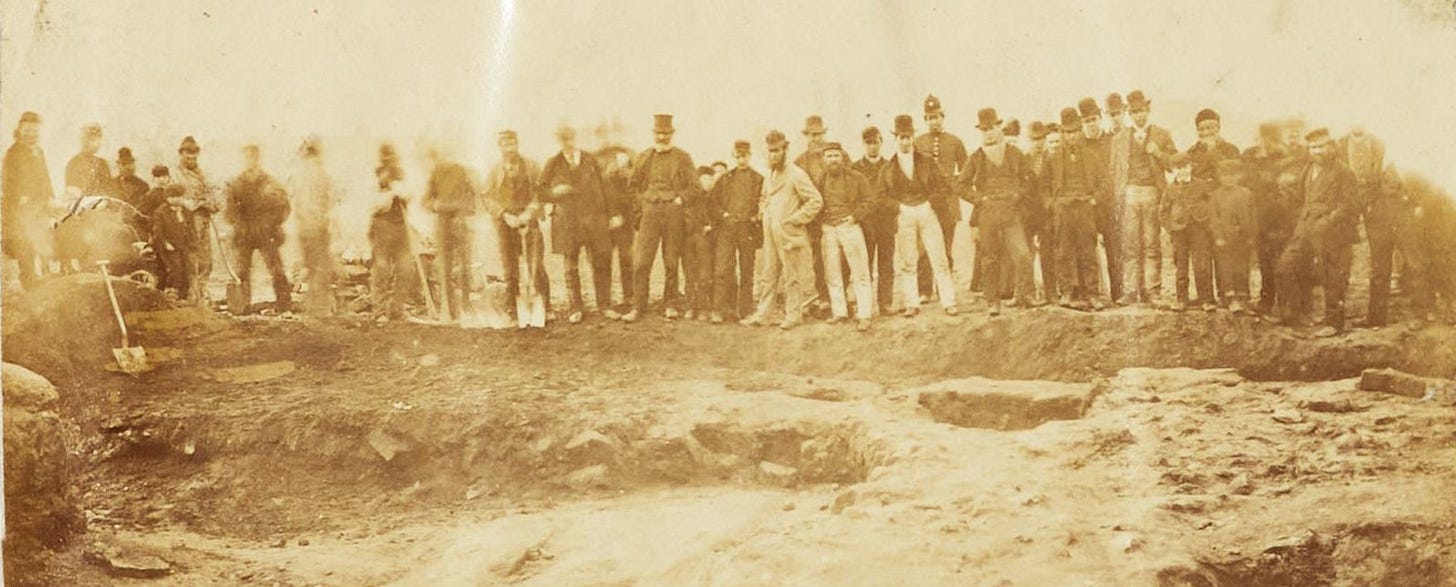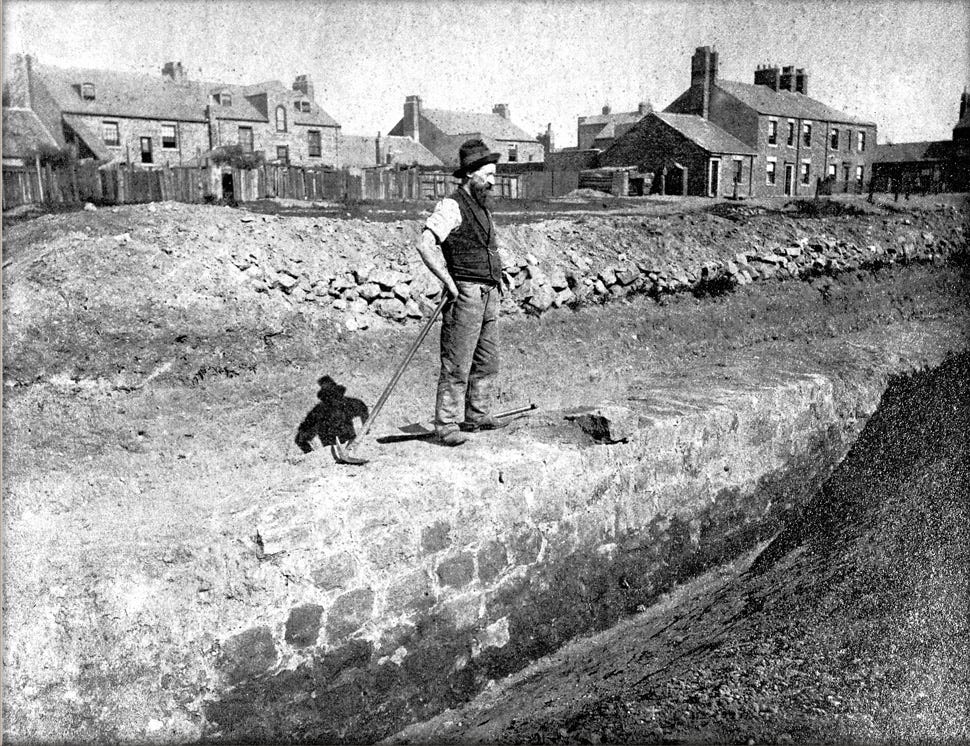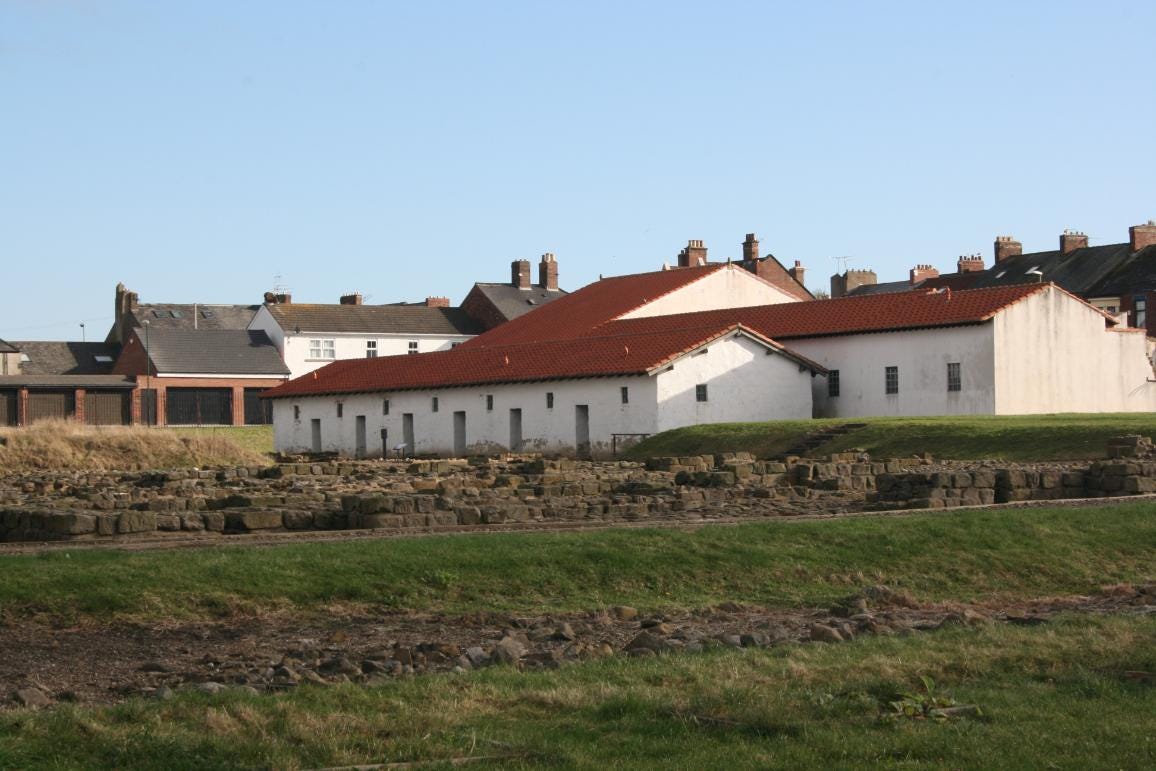Digging into the history of Arbeia
How a historic Tyneside visitor attraction owes its existence to campaigners of 150 years ago. Tony Henderson reports.
There was only one show in town in South Shields 150 years ago.
Plans to build houses on fields at the Lawe Top overlooking the Tyne, where Roman objects had been found over the years, prompted a campaign to excavate the area.
South Shields Council stepped in to buy some of the land and in 1875 digging began which would eventually result in what is now the Arbeia Roman fort attraction, run by North East Museums
Now the 150th anniversary of the start of the exploration of the site is being marked by an exhibition at the fort.
Striking Sight: The pioneering 1875 excavations of South Shields Roman Fort, which runs until September, delves into the digging from 1875-1881, which led to the establishment of what was called the Roman Remains Park.
Last year Arbeia attracted 78,284 visitors who owed a vote of thanks to the early campaigners who talked of “unveiling the Roman city.”
Arbeia archaeologist Alex Croom said: “It had been known at least from the 17th century that Roman remains were on the site, with ploughing turning up items and the line of a rampart faintly visible.”
Public interest ensured the campaign was a success and large crowds regularly turned up to watch the diggers at work.
The exhibition includes original finds such as a Roman high quality Samian dish stamped with the name Genitor, which had been on display in the window of a local grocer’s shop, and a skull with evidence of a fatal wound on the side of the head.
Digging had been taking place before the formal excavations, partly by the river pilots who lived nearby, who had started looking for Roman objects that they could then sell.
A gaming piece identified here as a spinning top was found by an unnamed person before the start of the formal excavations and is recorded in an extensive scrapbook of the excavations kept by local solicitor Robert Blair.
The scrapbook is held by The Word cultural venue in South Shields town centre.
The campaign to save the fort site began in February 1875 and involved a carefully orchestrated strategy of letter writing to newspapers.
The Rev. Dr Robert Hooppell, headmaster of the local Marine School, wrote a letter under the pen-name Scrutator (Latin for scrutineer/examiner/searcher) mentioning the Roman finds discovered in recent years.
“My object in drawing attention to these facts is to suggest that now, before the whole ground is covered with streets and houses, an effort should be made to unveil the buried city”.
On February 25, Tyneside landowner Ralph Carr-Ellison was the author of the next letter to be published, in which he wrote:
“I would contribute the services of Mr John Grey, my Clerk of Works at Hebburn Church free of expense to your Committee, to supervise the excavations on South Shields Lawe. Being a sober and docile man he would follow all the instructions of the Committee.”
Donations were also called for to finance the work. The Bishop of Durham gave £5 and the Duke of Northumberland £10.
The letter-writing campaign continued, one of which came from Robert Blair, who suggested that “a committee should at once be formed and a commencement made on uncovering the remains.”
After the formal excavations finished he built up his own collection of finds. He was secretary of the Society of Antiquaries of Newcastle upon Tyne for 40 years, and after his death his collection was gifted to the society, and is now in the Great North Museum.
A delegation visited the Mayor of South Shields and asked permission to start digging. The Mayor agreed, as long as they accepted that finds would to “belong to the town” and should be given to the Free Library (now South Shields Museum and Art Gallery).
The Mayor also gave permission “to prosecute any parties, other than those authorised, who might disturb the ground or attempt to make any excavations”.
A public meeting was held in the Free Library which was addressed by the Roman scholar Dr John Collingwood-Bruce who suggested they raise £100 from subscribers to pay for the work.
By the end of the evening, a formal Excavation Committee had been set up, with Robert Blair as secretary.
On March 15 1875, the official excavations began, with four men being employed to dig and one man to supervise.
A newspaper reported how the digging “was visited by many thousands of persons. The excavations continue to afford the greatest interest to the people of South Shields and visitors to the town, a great number of whom surround the workmen”.
The Excavation Committee employed the firm of Charles and Hicks, who had a studio in King Street in South Shields, to take photographs of the remains that had been uncovered.
The council later enclosed the dig area with railings to prevent the remains being damaged or stolen, built a caretaker’s cottage and opened the Roman Remains Park.
Standing above the entrance to the River Tyne, Arbeia guarded the main sea route to Hadrian's Wall. One of its garrisons was a detachment of Tigris bargemen from Mesopotamia.
With 24 granaries, Arbeia was a key garrison and military supply base to other forts along Hadrian’s Wall. It was visited and used as a base by the Emperor Severus for his Scottish campaign.
Subsequent finds have included the tombstone of Regina, who originally came from the tribe of the Catuvellauni based round St Albans. She was a slave of Barates, from Palmyra in Syria, who later freed and married her.
Another tombstone is of Victor the Moor from north Africa, a freed slave. The expensive tombstone was set up by his ex-master, a cavalry soldier called Numerianus.
A find in 1997 was of a complete Roman chain-mail shirt, made up of over 50,000 links, which was lost during a huge fire at the fort.
Arbeia also features accurate reconstructions of its West Gate, barracks, and part of the opulent house of the fort commander.







